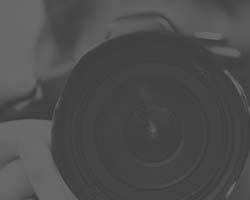"Light makes photography. Embrace light. Admire it. Love it. But above all, know light. Know it for all you are worth, and you will know the key to photography." — George Eastman

One of the most important factors in creating fantastic images is light. Whether it be natural light or man-made, beautiful light can be the difference between a good photograph and a spectacular one. From stunning landscapes to evocative portraits, lighting can covey emotion, create drama and dazzle the viewer’s eye with its ethereal glow. To learn the basic functions of your camera so you can work effectively in any given lighting scenario, check out our fundamentals of digital photography course.
There are five lighting scenarios to look out for when shooting.
1. Back Lighting: Backlit images are often the most impactful. Photographers commonly shoot backlit images of sunsets and sunrises, where the sun cuts through the atmosphere and creates beautiful colours that captivate the eye. Many novice photographers shy away from shooting into the sun and try and keep the light at their back. But backlighting is great in so many other situations. Place your subject with the sun behind them. Use the sun as a natural rim light around your subject; then bounce the light back towards the subject with a large reflector for some fantastic results. Food photography also looks great with backlighting. Give it a try!
2. Mixed Lighting: Watch any Wong Kar-Wai film, and you will see excellent examples of mixed light. Mixed light is when two or more types of light sources are used to illuminate a photograph. Neon mixed with tungsten and fluorescent can create some wonderful effects. Forget colour balancing! Live on the edge and shoot it as the eye sees it.
3. Chiaroscuro: In painting, cinema and photography, chiaroscuro is the use of strong contrasts between light and dark, usually featuring bold contrasts over the whole composition. This use of deep shadows and brighter areas is extremely effective in creating shape and dimension in an image. Deep shadows without detail produce what is known "negative space" and guide the viewer’s eye to the brighter areas of the photograph. Images that are all the same exposure value are often busy and tend to be rather flat. Forget HDR — chiaroscuro is where it's at!
4. Atmospheric: Inclement weather, smog, fog and smoky conditions can affect the light quality greatly, often elevating a humdrum scene to one of wonder and mystery. Light refracts, diffuses and becomes ethereal when photographing in such conditions. Next time it rains or is foggy out, grab your camera, some waterproof gear if necessary (a dry cleaning bag is great in a pinch) and hit the streets! Neon lights dancing off wet pavement is a photograph waiting to happen.
5. Magic Hour: The period during which the sky is light but the sun is not yet visible (morning), or has just passed out of visibility (evening) is what is called the "magic hour." This time of day is a favourite of many top landscape photographers. The light quality is quite unique and is gone before you know it. Be ready and shoot fast. It's worth getting up before the rooster to capture this magical light. In the evening, the magic hour is also perfect for shooting architecture and cityscapes, as the building lights are on and the the sky is a deep, inky indigo colour. Get ready early and set up before the magic hour happens.

"I am forever chasing light. Light turns the ordinary into the magical." — Trent Parke


This is an image I shot of Queen Street East near my studio in Toronto. It encompasses many of the light qualities I outlined earlier: atmospheric, backlit, mixed lighting and chiaroscuro thrown in for good measure. Foggy nights are my favourite times to shoot around the city.
See the light! And remember, keep shooting!
Bonus: Want to learn how to take better photos? Enroll in an online photography course from NYIP today.






